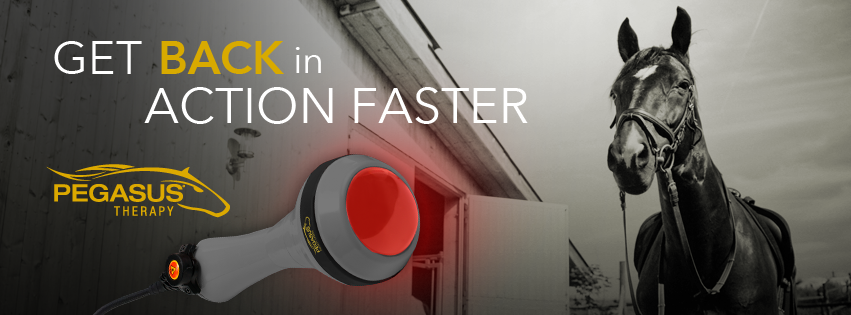Discover the Impressive Advantages of Equine Therapy for Emotional Recovery
Discover the Impressive Advantages of Equine Therapy for Emotional Recovery
Blog Article
Evaluating the Performance of Laser Treatment in Equine Treatment for Injury Recovery
The examination of laser therapy's efficiency in equine injury rehabilitation depends upon multiple aspects, including healing time, pain reduction, and tissue regeneration. Clinical studies suggest noteworthy improvements in conditions like tendonitis and osteo arthritis, associated to improved cellular function and elevated ATP production. Vets frequently observe exceptional outcomes with laser therapy contrasted to conventional techniques, positioning it as an essential component in equine treatment. Nevertheless, the necessity for continuous surveillance and customized therapy strategies can not be overemphasized. What details scientific evidence sustains these claims, and exactly how do veterinarians implement these methods in technique?
Recognizing Laser Therapy
Laser treatment has become an essential tool in veterinary medication, specifically in the treatment of equine conditions. Known for its non-invasive nature and efficacy, laser therapy involves the application of certain wavelengths of light to promote tissue fixing and minimize inflammation. This healing modality is progressively preferred for its capability to increase the healing process in horses experiencing a range of musculoskeletal injuries and chronic conditions.
The main mechanism behind laser treatment is its capacity to enhance cellular features. When laser light passes through the skin, it is soaked up by mitochondria, the giant of cells, which results in enhanced production of adenosine triphosphate (ATP) This biochemical energy boost facilitates mobile fixing and regeneration. Additionally, laser therapy advertises vasodilation, enhancing blood circulation and oxygen delivery to broken cells, hence expediting healing.
In equine medicine, laser therapy is particularly advantageous for problems such as tendonitis, osteoarthritis, and injury recovery. The technique is admired for its pain-relieving properties, allowing horses to reclaim movement and function much more swiftly. Veterinarians additionally appreciate its minimal negative effects contrasted to various other treatment techniques, making it a reliable and safe choice for equine treatment.

Exactly How Laser Treatment Works

Upon absorption, these photons trigger a series of biochemical adjustments, improving mitochondrial feature and resulting in raised adenosine triphosphate (ATP) manufacturing. This rise in ATP speeds up cellular metabolic process, advertising tissue repair service and regrowth. Furthermore, laser treatment modulates inflammatory actions by impacting cytokine levels and minimizing oxidative tension, therefore reducing discomfort and swelling.
An additional significant facet of laser treatment is its function in enhancing microcirculation. The therapy advertises vasodilation, boosting blood circulation and oxygen shipment to broken tissues (Equine Therapy). This helps with the elimination of mobile particles and sustains the spreading of fibroblasts and collagen synthesis, vital for wound healing
Medical Evidence
The effectiveness of laser treatment in equine therapy has actually been substantiated through different clinical research studies, showcasing its healing prospective across a range of conditions. A research carried out by Turner et al. (2012) demonstrated that horses treated with low-level laser treatment (LLLT) for tendon injuries showed accelerated recovery compared to those getting conventional treatments.
In a similar way, study by Johnson and colleagues (2015) concentrated on equine muscular tissue injuries, disclosing that laser treatment dramatically expedited muscular tissue fiber regeneration and lowered muscle mass tightness. These searchings for were supported by histological evaluations showing better muscle mass cells organization. Additionally, clinical analyses have actually revealed that laser treatment can alleviate chronic conditions such as osteo arthritis. A research by Smith et al. (2018) reported that horses with osteoarthritic joints experienced significant discomfort alleviation and increased array of movement complying with a regimen of laser therapy sessions.
Vet Insights

Veterinarians additionally appreciate the flexibility of laser treatment. She points out that laser therapy can be customized to the specific needs of each equine, ensuring ideal end results.
Additionally, veterinarians value the ability to incorporate laser therapy with other treatment methods. This multimodal technique can enhance overall treatment efficiency, providing a comprehensive solution for equine recovery. Such recommendations from skilled professionals underscore the expanding acceptance and application of laser treatment in equine medicine.
Practical Factors To Consider
A crucial aspect of executing laser treatment in equine treatment involves comprehending the sensible factors to consider that ensure its efficiency and safety. First and leading, it is website link critical to select the suitable laser gadget, as various kinds vary in wavelength, power, and infiltration depth. Equine Therapy. Veterinarians must be well-versed in these criteria to customize therapy procedures properly to each injury type
Additionally, the regularity and period of laser treatment sessions require mindful planning to optimize healing benefits while reducing any potential negative results. Constant surveillance of the horse's reaction to treatment can direct necessary changes in the treatment program. Establishing a safe and controlled setting during therapies is likewise crucial to prevent unintentional exposure to laser discharges, which might harm both the steed and the trainer.
Training and certification of workers administering laser therapy are extremely important to make certain appropriate method and to maintain safety and security criteria. Additionally, preserving precise documents of each session, including laser settings and observed end results, is important for reviewing the general performance of the therapy and for making data-driven decisions.
Verdict
Laser treatment has emerged as a reliable modality in equine injury recovery, supplying considerable benefits in healing time, pain alleviation, and tissue healing. Scientific research studies highlight significant improvements in conditions such as tendonitis and osteo arthritis, associated to improved mobile function and boosted ATP manufacturing. Vet observations corroborate these findings, highlighting remarkable results contrasted to traditional treatments. For ideal outcomes, constant tracking and customized treatment methods continue to be vital in leveraging the full possibility of laser therapy in equine anonymous treatment.
Report this page